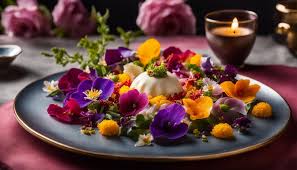Japan, a country known for its rich cultural heritage and meticulous craftsmanship, offers a culinary experience that is both refined and diverse. Japanese cuisine is celebrated for its emphasis on fresh, high-quality ingredients, seasonal flavors, and aesthetic presentation. From the delicate sushi of Tokyo to the hearty ramen of Hokkaido, Japanese food is a harmonious blend of taste and aesthetics.
A Historical Perspective
Japanese cuisine has a history that spans thousands of years, influenced by ancient traditions, regional variations, and international exchanges. The introduction of rice cultivation in the Yayoi period (300 BCE–300 CE) laid the foundation for Japanese culinary practices, with rice becoming a staple food.
The arrival of Buddhism in the 6th century introduced vegetarianism and the practice of shojin ryori (Buddhist temple cuisine), which emphasizes simple, plant-based dishes. The influence of Chinese and Korean cuisines brought new ingredients and cooking techniques, such as the use of soy sauce and tofu.
The Edo period (1603-1868) saw the development of many iconic Japanese dishes, including sushi, tempura, and soba noodles. The opening of Japan to the West in the 19th century introduced Western ingredients and culinary techniques, leading to the creation of fusion dishes such as tonkatsu (breaded and fried pork cutlet) and curry rice.
The Essence of Japanese Cuisine
Japanese cuisine is defined by its focus on fresh, seasonal ingredients and minimalistic preparation. The use of dashi (a broth made from kelp and bonito flakes), soy sauce, miso, and sake are central to Japanese cooking. Techniques such as grilling, steaming, and simmering are commonly used to preserve the natural flavors and textures of the ingredients.
Regional Specialties
Japan’s diverse geography and cultural regions have given rise to a wide variety of culinary traditions. Here are some highlights from different parts of the country:
- Kanto (Eastern Japan): Known for its bold and savory flavors, Kanto cuisine features dishes like tempura (battered and deep-fried seafood and vegetables), soba (buckwheat noodles), and monjayaki (a savory pancake).
- Kansai (Western Japan): Renowned for its delicate and refined flavors, Kansai cuisine includes dishes such as okonomiyaki (savory pancake), takoyaki (octopus balls), and kaiseki (a traditional multi-course meal).
- Hokkaido (Northern Japan): Famous for its fresh seafood and dairy products, Hokkaido cuisine features dishes like ramen (noodle soup), jingisukan (grilled mutton), and seafood donburi (rice bowl topped with fresh seafood).
- Kyushu (Southern Japan): Known for its rich and hearty flavors, Kyushu cuisine includes dishes such as tonkotsu ramen (pork bone broth ramen), champon (noodle soup with seafood and vegetables), and mentaiko (spicy cod roe).
Iconic Japanese Dishes
Japanese cuisine boasts a plethora of iconic dishes that have gained international fame. Here are a few must-try Japanese specialties:
- Sushi: A quintessential Japanese dish, sushi consists of vinegared rice topped or rolled with various ingredients, such as raw fish, seafood, and vegetables. Nigiri (hand-pressed sushi) and maki (rolled sushi) are popular variations.
- Ramen: A hearty noodle soup with Chinese origins, ramen is made with wheat noodles served in a flavorful broth, often topped with slices of pork, nori (seaweed), and a soft-boiled egg. Each region of Japan has its own unique style of ramen.
- Tempura: Lightly battered and deep-fried seafood and vegetables, tempura is a popular Japanese dish enjoyed as an appetizer or main course. It is often served with a dipping sauce and grated daikon radish.
- Sukiyaki: A hot pot dish made with thinly sliced beef, tofu, vegetables, and noodles simmered in a sweet and savory broth, sukiyaki is typically cooked at the table and enjoyed communally.
- Matcha: A finely ground powdered green tea, matcha is used in traditional tea ceremonies and as an ingredient in various desserts, such as matcha ice cream and matcha-flavored sweets.
The Japanese Dining Experience
Dining in Japan is a ritualistic and harmonious experience, emphasizing respect, etiquette, and appreciation for the food. Traditional Japanese meals are typically served with multiple small dishes, encouraging the enjoyment of a variety of flavors and textures. Rice, miso soup, and pickled vegetables are common accompaniments.
Seasonality is a key aspect of Japanese dining, with dishes and ingredients changing to reflect the seasons. This concept of shun (seasonal foods) is deeply ingrained in Japanese culinary culture, emphasizing the importance of freshness and natural flavors.
Street food is also an essential part of Japanese culinary culture, with bustling markets and food stalls offering a variety of snacks and quick bites. From the savory yakitori (grilled chicken skewers) to the sweet taiyaki (fish-shaped pastries filled with sweet bean paste), Japanese street food is a delightful exploration of flavors and textures.
Festivals and special occasions play a significant role in Japanese dining, with traditional dishes prepared and enjoyed as part of the celebrations. Whether it’s the elaborate feasts of New Year’s or the cherry blossom viewing picnics of spring, Japanese cuisine is a celebration of culture, tradition, and the joy of sharing a meal.
Conclusion
Japanese cuisine is a testament to the country’s rich cultural heritage and its love for fresh, seasonal ingredients and refined flavors. With its diverse regional specialties and emphasis on traditional cooking methods, Japanese food offers a culinary experience that is both harmonious and satisfying. Whether you’re savoring a plate of sushi or indulging in a bowl of ramen, Japanese cuisine invites you to explore the delicate and diverse flavors of Japan.


